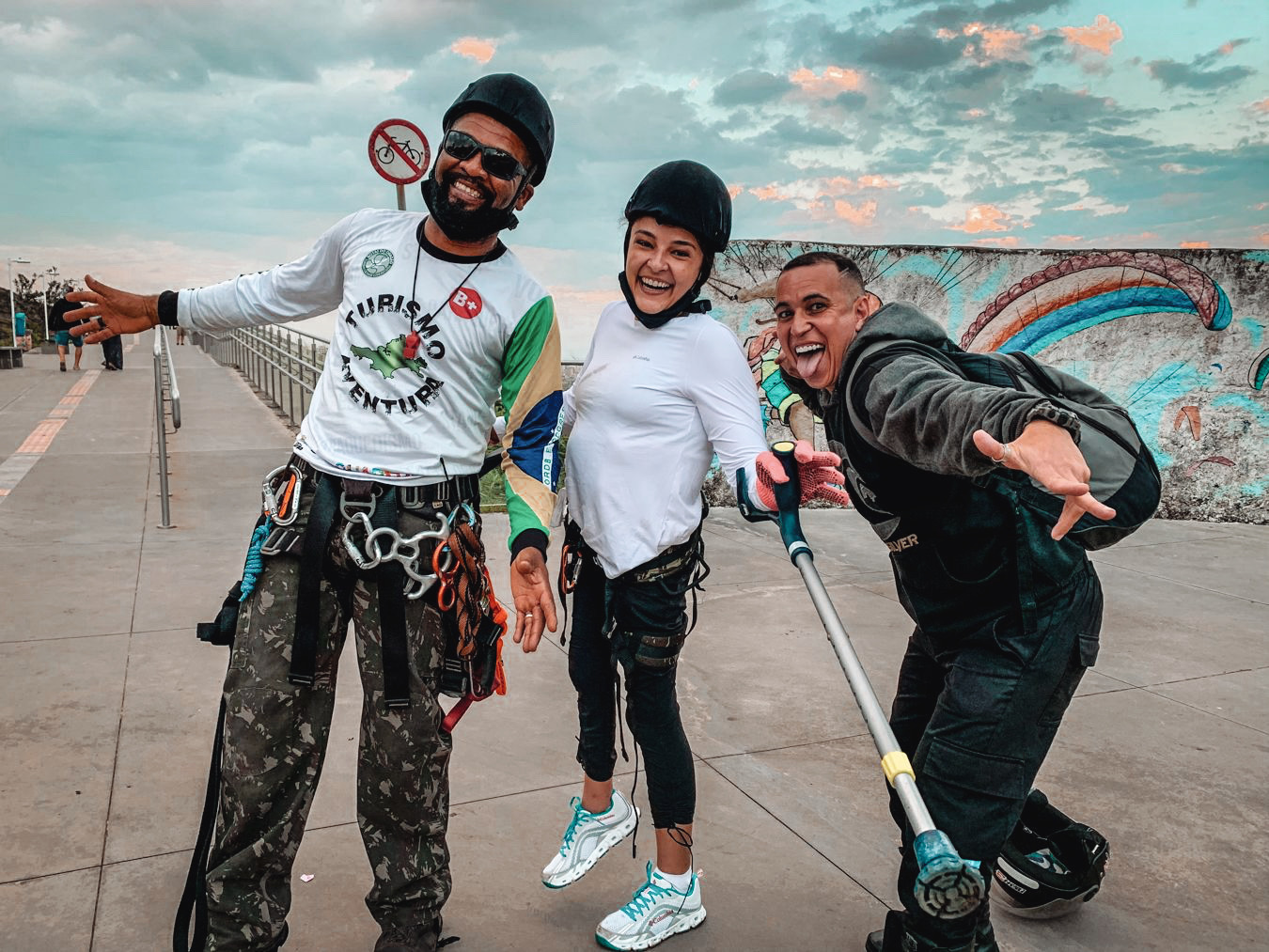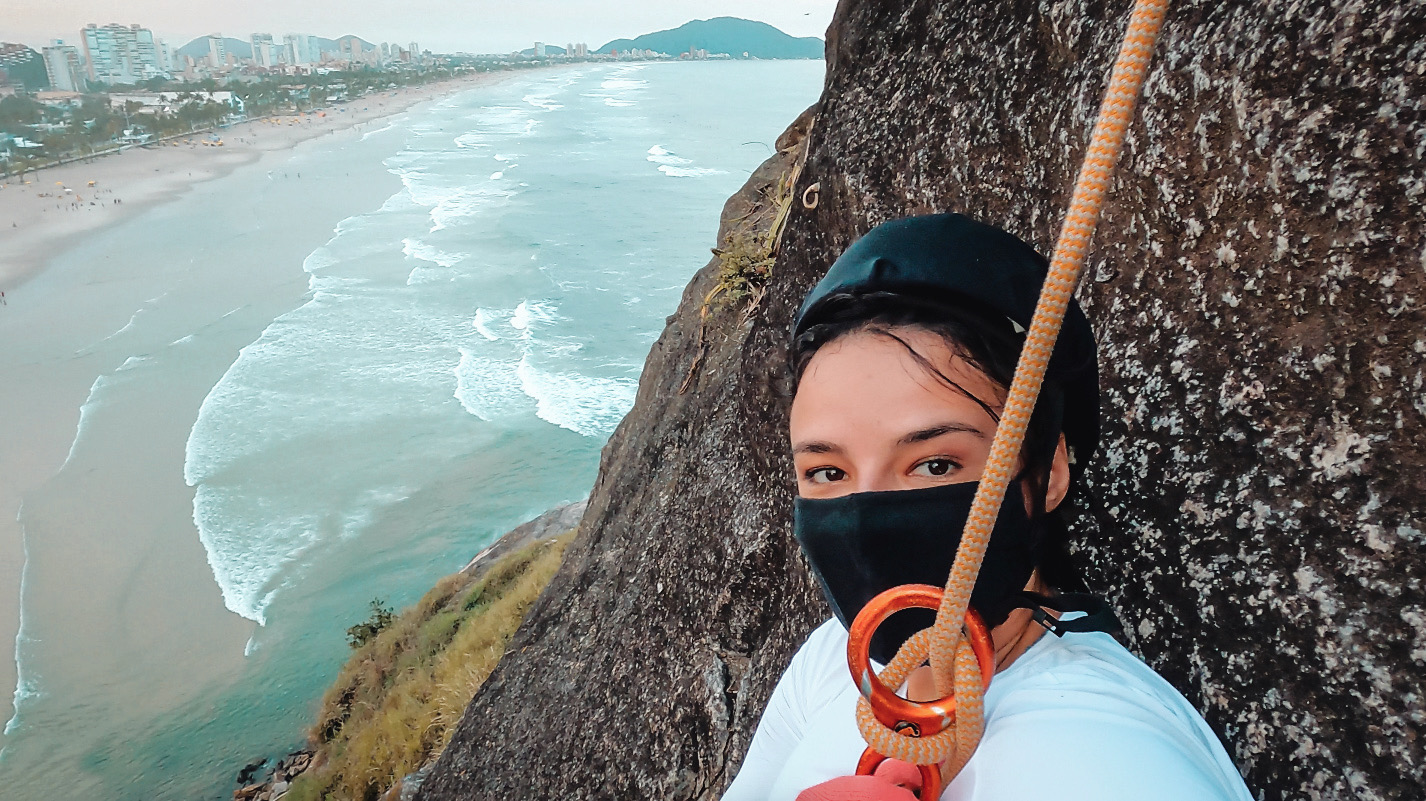
Forty-five meters in a straight line seem like a lot to you? And 45 meters to go down a hill? What if you go down this hill on crutches?
There are those who say that this is not a task for someone with a disability like mine. After all, how are you going to get off a cliff if you can barely stand on one leg to walk in the most predictable places?
In the life of someone who walks on crutches, it is common for humans who know little about you to pretend to know more about your body than you do. In other words, they are often trying to say what their limits are.
That’s when I decided to do a rappel. There are even professionals in the area who refuse to work with a person with a disability. Would it be too difficult? Or maybe it would just be too out of the ordinary for those who dare little in their daily lives?
Regardless of the reason that motivates people to disbelieve the physical and intellectual capacity of people with disabilities, I stick to those who embark with me on what many call madness.
Here I found a company that, without blinking, agreed to put a woman on crutches to rappel.
The setting for the feat was in charge of the city of Guarujá, an hour and a half from the capital of the state of Sao Paulo, Brazil.
On a late afternoon after a rainy day, I arrived at the Morro da Campina lookout, also known as Morro do Maluf, which marks the beginning of Enseada beach (or the end of it, depending on your point of view).
Surrounded by a parapet, the view from the top of the hill is, in fact, privileged. But of course, I wanted more than that. More than seeing, my goal was to feel.
Mesquita is the name of the boy who, surely, some tourist inside the bars thought was either mad or a hero. On the contrary, Mesquita knows what he is doing. He trusts his work, his equipment and he trusts me too. It’s the recipe we need to make this descent work.
It had barely arrived, in a few minutes the equipment was all ready. He fits the rope to the pegs with the same ease and agility with which I wield my crutches for any walk.
Still inside the parapet protection, he begins to prepare me. Right there, I put on the safety equipment. The look of astonishment from the audience, who now doesn’t even see the beautiful view from the lookout, follows me. “What do you mean, is this girl going to rappel on crutches?”
So I go to the abyss.
The first 5 meters

Mesquita was forceful when he warned me even before we reached the hill: the first five meters would be the most difficult. And he was right.
The top of the hill has a concave shape, which experts call a positive slope. In other words, to start the rappel itself, you need to put strength in your feet and balance yourself with the help of the rope until you reach a point where you will, in fact, be hanging.
And all that a person with lower limb disability doesn’t have is…? Strength in the feet. I decide to do a few meters with the support of crutches and that, when we start to move away from the top, I will hand my companions over to someone who will meet me below.
The next few yards would be me, the ropes, the instructor, and the sneaker who would have to handle the post-rain rock grip through the single leg I use to walk.
I started to descend, relying on the little strength I have in my left leg, in the sole of my sneakers and, of course, in Mesquita. As it had been raining throughout the day, my fear was to slip and leave the mark of the stone on my face forever.
Little by little I was dragging my foot on the ground in a “moonwalk” style (the famous Michael Jackson step), to ensure that I could move and descend to the point where the rappel itself would really start.
I continued with my two points of support, my left foot and Mesquita, whose shoulder was fundamental in the course.
Gradually, dragging our sneakers on the rock, we made our way forward, until we were finally able to literally hang down.
The last 40 meters

From then on, already dripping with sweat, the challenge became a motor coordination exercise.
The time for autonomy has arrived. I was in charge of the rope. Mesquita was the support in the rear and, of course, the confidence I needed.
At strategic points, we stopped for breath. It was the moment when I looked up and had the dimension of the path I had already traveled. I looked to the side and saw the sea close enough to see the waves, and far enough away to make it look like I was bigger than him. Back, the wet stone with its leaves rising improbably.

Step by Step, every inch descended brought the sensation of submerging, of belonging to every crease on that rock. After all, that’s what you feel when you perceive part of nature. You feel strong and powerful because you are part of it. And small because it’s just part of it.
And so, learning to control the inches of rope that held me, I went down until I touched the ground and hugged my crutches again.